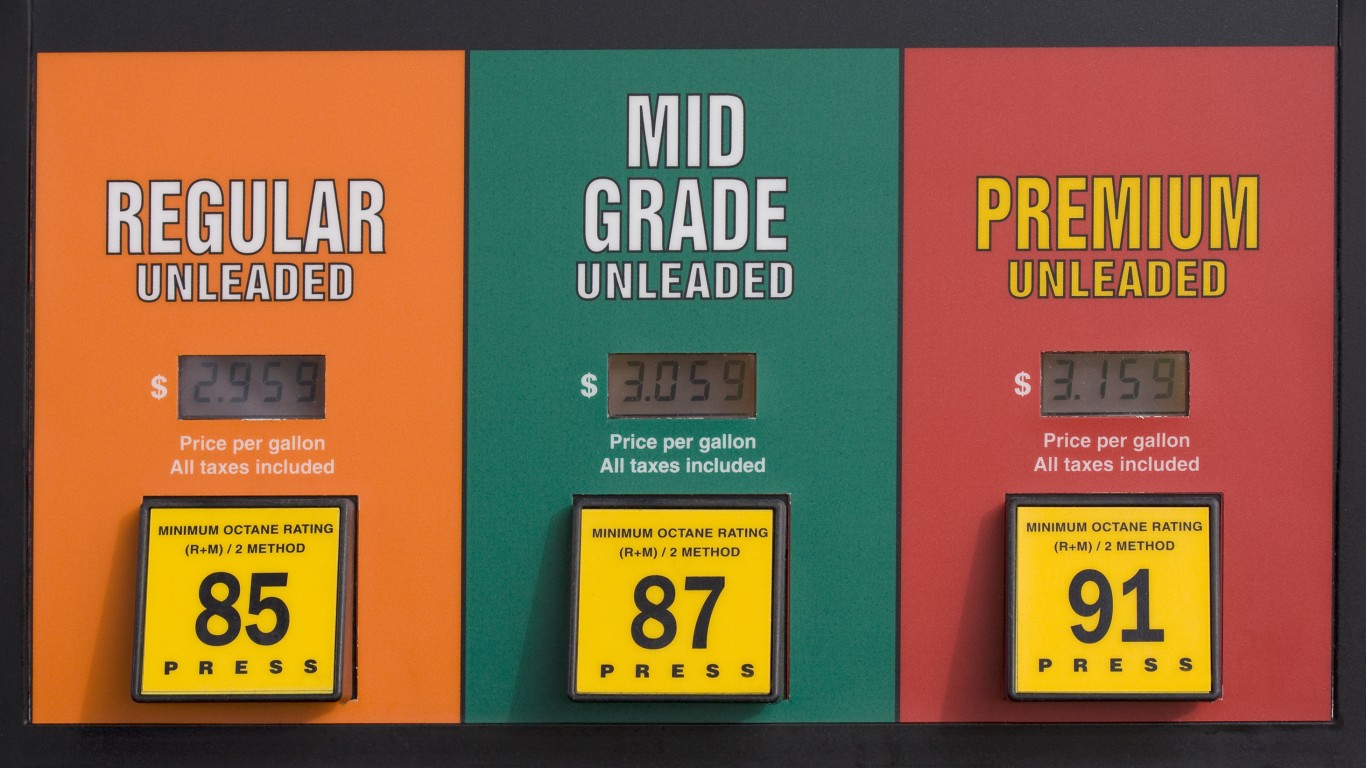
Tuesday evening, the American Petroleum Institute (API) reported that crude inventories fell by 5.2 million barrels and gasoline inventories dropped by 1.2 million barrels in the week ending May 15. For the same period, analysts surveyed by Platts had estimated a decrease of 2 million barrels in crude inventories.
Total gasoline inventories decreased by 2.8 million barrels last week, according to the EIA, but remain well above the upper limit of the five-year average range. Total motor gasoline supplied (the agency’s measure of consumption) averaged over 9 million barrels a day for the past four weeks, up by 1.1% compared with the same period a year ago.
On Monday, analysts at Goldman Sachs said that the price for a barrel of West Texas Intermediate (WTI) crude oil could slump to $45 by October. The analysts’ 12-month price forecast has WTI at $55 a barrel, implying a price of $53 a barrel in the first quarter of next year, according to a report from Bloomberg. Goldman explained in its research note:
Our bearish view has been driven by two surpluses: excess hydrocarbons, but just as importantly, excess capital. We find that the global market imbalances are in fact not solved and believe that the rally will prove self-defeating as it undermines the nascent rebalancing.
ALSO READ: 5 Big Oil Stocks to Buy for the Rest of 2015
With oil at $60 a barrel, Goldman believes that U.S. shale producers will pump more oil and that completing already drilled wells could bring another 250,000 barrels a day into production quickly.
Saudi Arabia produced 10.3 million barrels a day in March, a new record, and exported nearly 8 million barrels a day, mostly to Asia. Saudi production and pricing will also act to keep a lid on international pricing.
Before the EIA report, WTI crude for July delivery traded up about 1.4% at around $58.75 a barrel. The WTI price bounced higher to around $58.85 (up about 1.5% for the day) immediately after the report was released. The 52-week range on WTI futures is $47.46 to $97.27. Within 10 minutes following the EIA report, crude had dropped to around $58.25.
Distillate inventories decreased by 500,000 barrels last week and remain in the lower half of the average range for this time of year. Distillate product supplied averaged over 4.1 million barrels a day over the past four weeks, up by 1.6% when compared with the same period last year. Distillate production averaged 4.8 million barrels a day last week, down about 100,000 barrels a day compared with the prior week’s production.
For the past week, crude imports averaged 7.2 million barrels a day, up by 318,000 barrels a day compared with the previous week. Refineries were running at 92.4% of capacity, with daily input of over 16.2 million barrels, about 245,000 barrels a day above the previous week’s average.
According to AAA, the current national average pump price per gallon of regular gasoline is $2.722, up from $2.668 a week ago and from $2.457 a month ago. Last year at this time, a gallon of regular cost $3.642 on average in the United States.
ALSO READ: 15 Companies Losing the Most Money
Here is a look at how share prices for two blue-chip stocks and two exchange traded funds react to this latest report.
Exxon Mobil Corp. (NYSE: XOM) traded up about 0.2%, at $87.03 in a 52-week range of $82.68 to $104.76. Year to date, Exxon stock traded down about 6%, and it is down about 8.8% since early November as of Tuesday’s close.
Chevron Corp. (NYSE: CVX) traded up about 0.4%, at $105.47 in a 52-week range of $98.88 to $135.10. As of the most recent close, Chevron shares had dropped about 6% year to date and trade down about 10% since early November.
The United States Oil ETF (NYSEMKT: USO) traded up about 0.3% to $29.69, in a 52-week range of $15.61 to $39.44.
The Market Vectors Oil Services ETF (NYSEMKT: OIH) traded up about 0.1% to $36.85, in a 52-week range of $31.51 to $58.01.
It’s Your Money, Your Future—Own It (sponsor)
Retirement can be daunting, but it doesn’t need to be.
Imagine having an expert in your corner to help you with your financial goals. Someone to help you determine if you’re ahead, behind, or right on track. With SmartAsset, that’s not just a dream—it’s reality. This free tool connects you with pre-screened financial advisors who work in your best interests. It’s quick, it’s easy, so take the leap today and start planning smarter!
Don’t waste another minute; get started right here and help your retirement dreams become a retirement reality.
Thank you for reading! Have some feedback for us?
Contact the 24/7 Wall St. editorial team.




